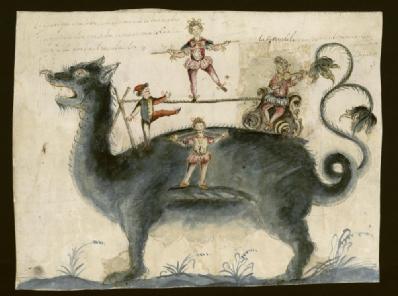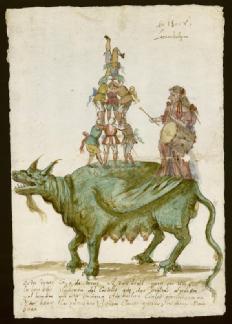Week 7: Ceremony and Ritual
Essential Reading 
- Francisco Bethencourt, ‘The Auto da Fé: Ritual and Imagery,’ Journal of the Warburg and Courtauld Institutes, 55 (1992), pp. 155-168
- Susan Verdi Webster, Art and Ritual in Golden Age Spain (Princeton University Press, 1998). Chapter 4: The Ritual Context: Holy Week Processions
Seminar Questions:
- Erin Rowe has argued (in relation to Habsburg Spain): ‘religious celebrations could express and communicate a specific vision of community and sacred kingship.’ Discuss.
- Consider the material culture of public ceremonies, festivities, and events (ephemeral architecture, sculpture, costume, theatre and dance). What role did they play in the expression and experience of public spectacles? How might recourse to a ‘period eye’ enrich our interpretation?
- What role could public ceremonies/festivities play in communicating/reinforcing the power of King and Church?
- Discuss the ritual and imagery of the Auto da fé.
- Compare the celebration of Corpus Christi in early modern Spain and the Americas (focusing on visual and material culture).
Further Reading
- Teofilo F. Ruiz, A King Travels: Festive Traditions in Late Medieval and Early Modern Spain(Princeton, 2002)
- Karina Galperín, ‘The Passion According to Berruguete: Painting the Auto-da-fé and the Establishment of the Inquisition in Early Modern Spain,’ Journal of Spanish Cultural Studies, 14: 4 (2013), pp. 314-347
- Fernando Marías, ‘Censuring Public Images: A Woodcut in the Inquisition Trial of Esteban Jamete, in Kimberly Lynn (ed.), The Early Modern Hispanic World: Transnational and Interdisciplinary Approaches (Cambridge, 2017).
- William Caferro, ‘Philip II's Royal Exequies in two Italian cities: his deeds and virtues as seen in Florence and Naples, in Samuel Cohn Jr., Marcello Fantoni, Franco Franceschi (eds.), Late Medieval and Early Modern Ritual: Studies in Italian Urban Culture (Turnhout, 2013).

